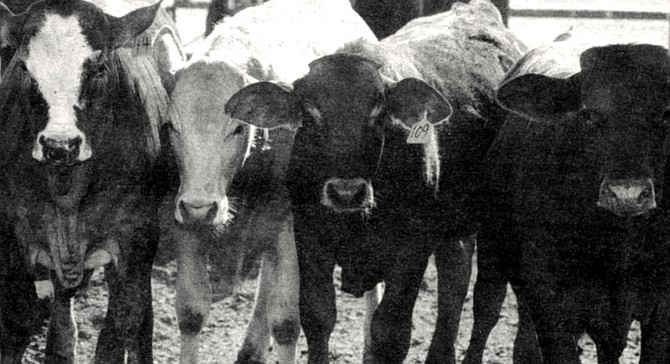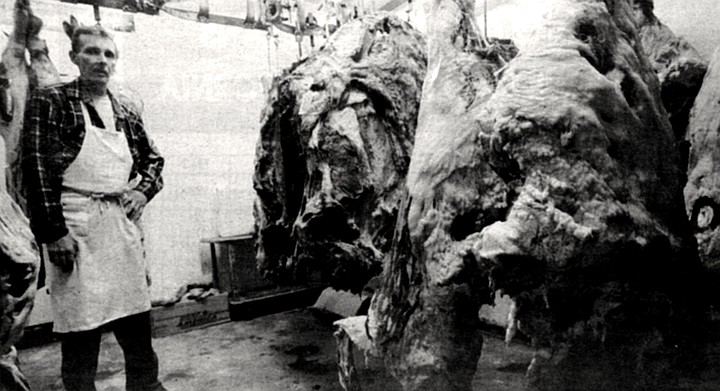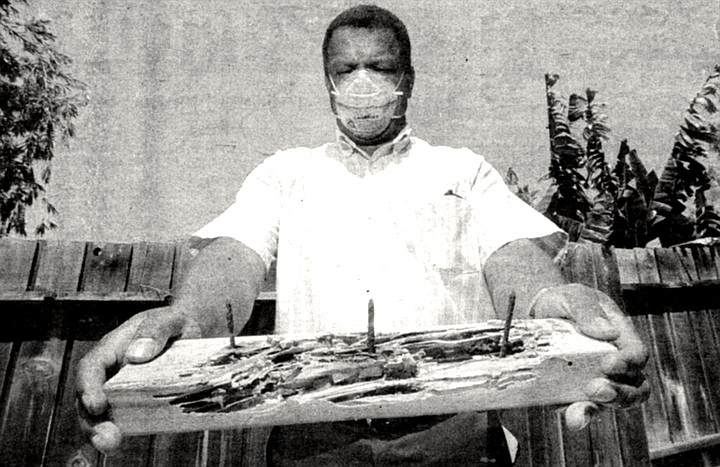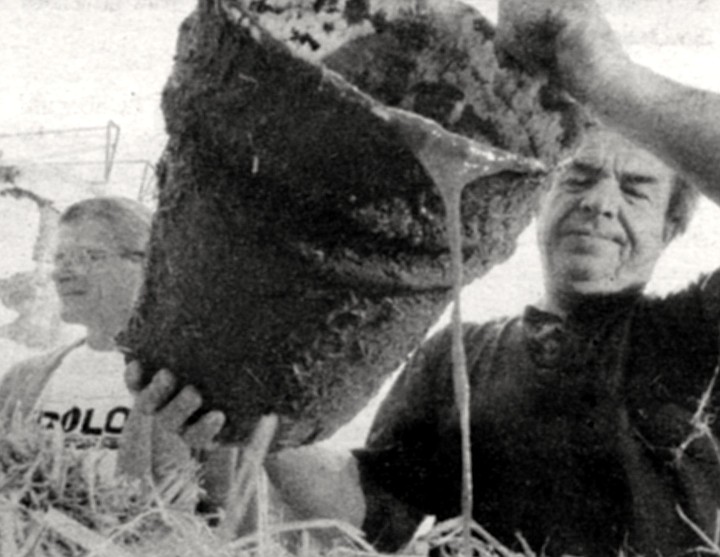 Facebook
Facebook
 X
X
 Instagram
Instagram
 TikTok
TikTok
 Youtube
Youtube

David Stepp waits for an ostrich craze
A 220-pound bird has got about 85 pounds of meat. And the meat is red meat. Two of the muscle groups taste exactly like tenderloin beefsteak. It is all on the rump and the thighs; there is nothing in the chest, a little bit in the ribs. The rump is where the tenderloin comes from. There is less fat in a serving of ostrich than there is in a serving of trout.
By Ernie Grimm, Sept. 19, 2002 | Read full article

He stands with a solid, bovine mixture of contentment and resignation until — BANG! — the bullet disappears into his skull and then his legs fold and he drops straight down and rolls on his side and kicks and gasps as the eight-inch butcher knife saws an opening in his neck. A few more great kicks at the air and his motion stops, but the blood will keep pouring from that hole for a long while yet. The blood is blood — red ; other reds do not describe it, it describes other reds
By Matthew Lickona, October 16, 1997 | Read full article

The last time I went hunting was for ducks, and I’d been instructed then to wear camouflage clothing and hats. I ran around town to military-surplus stores finding it all, including a “Desert Storm” soft-brimmed hat. I also bought a pair of knee-high boots for wading. “You won’t need all that,” Nesby said on the phone, “You don’t have to hide from doves.”
By Ernie Grimm, Dec. 2, 1999 | Read full article

It can get wet out there in the desert, especially when you're raising tons of fish.
Like most people involved in aquaculture, Engler’s interest in the biological habits of fish is more an obsession. He has been successful at a variety of enterprises, including construction, real estate, raising eucalyptus seedlings, and slumlording, and he could have saved himself a lot of work and worry by going into an industry more proven than desert aquaculture.
By Steve Sorensen, April 4, 1985 | Read full article

San Diego is one of the most termite-rich areas in North America.
Termites live much longer than most insects. “Most insects live and die in a few weeks,” says Michael Rust, chairman of the University of California Riverside’s urban entomology department. “Queen bees ... may live two or three years, but most of her offspring will live a summer. Ants are like that. With houseflies and mosquitoes, you’re talking about weeks from start to finish.” Worker termites, however, probably live about three to four years, according to Rust. And studies indicate that the Western drywood queen may live up to 18 years. Termite queens from Africa have been estimated to live 30 years. “That’s an extremely long time for an insect,” Rust comments.
By Jeannette De Wyze, June 5, 1997 | Read full article

New ways to fatten cows
"It's what McDonald's and Burger King and all those other restaurants use. They cook a few french fries for a while, then that fat that's left over, you can't dump that down the drain. So, they'll put it in barrels, and then those barrels are collected by a company that will recycle the fat, filter it and centrifuge it. Then what we call the yellow grease will be sent back out to the feed lots as a feed ingredient."
By Matthew Lickona, February 19, 1998 | Read full article


David Stepp waits for an ostrich craze
A 220-pound bird has got about 85 pounds of meat. And the meat is red meat. Two of the muscle groups taste exactly like tenderloin beefsteak. It is all on the rump and the thighs; there is nothing in the chest, a little bit in the ribs. The rump is where the tenderloin comes from. There is less fat in a serving of ostrich than there is in a serving of trout.
By Ernie Grimm, Sept. 19, 2002 | Read full article

He stands with a solid, bovine mixture of contentment and resignation until — BANG! — the bullet disappears into his skull and then his legs fold and he drops straight down and rolls on his side and kicks and gasps as the eight-inch butcher knife saws an opening in his neck. A few more great kicks at the air and his motion stops, but the blood will keep pouring from that hole for a long while yet. The blood is blood — red ; other reds do not describe it, it describes other reds
By Matthew Lickona, October 16, 1997 | Read full article

The last time I went hunting was for ducks, and I’d been instructed then to wear camouflage clothing and hats. I ran around town to military-surplus stores finding it all, including a “Desert Storm” soft-brimmed hat. I also bought a pair of knee-high boots for wading. “You won’t need all that,” Nesby said on the phone, “You don’t have to hide from doves.”
By Ernie Grimm, Dec. 2, 1999 | Read full article

It can get wet out there in the desert, especially when you're raising tons of fish.
Like most people involved in aquaculture, Engler’s interest in the biological habits of fish is more an obsession. He has been successful at a variety of enterprises, including construction, real estate, raising eucalyptus seedlings, and slumlording, and he could have saved himself a lot of work and worry by going into an industry more proven than desert aquaculture.
By Steve Sorensen, April 4, 1985 | Read full article

San Diego is one of the most termite-rich areas in North America.
Termites live much longer than most insects. “Most insects live and die in a few weeks,” says Michael Rust, chairman of the University of California Riverside’s urban entomology department. “Queen bees ... may live two or three years, but most of her offspring will live a summer. Ants are like that. With houseflies and mosquitoes, you’re talking about weeks from start to finish.” Worker termites, however, probably live about three to four years, according to Rust. And studies indicate that the Western drywood queen may live up to 18 years. Termite queens from Africa have been estimated to live 30 years. “That’s an extremely long time for an insect,” Rust comments.
By Jeannette De Wyze, June 5, 1997 | Read full article

New ways to fatten cows
"It's what McDonald's and Burger King and all those other restaurants use. They cook a few french fries for a while, then that fat that's left over, you can't dump that down the drain. So, they'll put it in barrels, and then those barrels are collected by a company that will recycle the fat, filter it and centrifuge it. Then what we call the yellow grease will be sent back out to the feed lots as a feed ingredient."
By Matthew Lickona, February 19, 1998 | Read full article
Comments